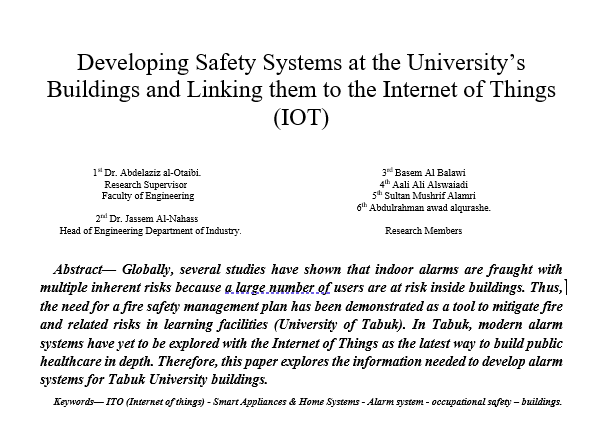
أثر تشكيل الشوارع على الأداء الحراري للمباني في قطاع غزة pdf
ملخص الدراسة:
Urban street morphology plays a significant role in the development of a comfortable conditions inside streets canyon and buildings. It directly influences the incident solar radiation falling on streets and façades overlooking it and thus the energy consumption in buildings. The Gaza Strip has suffered from a severe shortage of energy sources as well as from randomness in planning in many areas. Therefore, this research discusses the impact of street morphology on the thermal performance of buildings, especially with regard to the street properties including the aspect ratio i.e. height-to-width ratio H/W and canyon axes orientated, geometric architectural details including galleries, asymmetrical profiles with different openness to the sky and horizontal overhangs on façades, geometric shapes of the street and the main element of streets which is vegetation. Also the research provides an overview of the situation in the Gaza Strip focusing on streets design especially with regard to their geometries and orientation. The research assumes that the configuration of streets has a great impact on the viability of passive solar heating and cooling in the building and thus reducing the energy consumption. Hence, the research highlights the configuration of an urban street in the Gaza Strip in an attempt to find solutions for improving the environmental planning for the street. This research aims to discuss factors that affect the thermal balance of the building in accordance with local environmental conditions of the Gaza Strip. In order to achieve the purpose of the research, thermal simulation software ECOTECT and International Development Association - Indoor Climate and Energy (IDA-ICE) were utilized to assess the effect of street morphology on the incident solar radiation and the thermal performance of buildings in the Gaza Strip. The results indicate important thermal effects as a result of the street properties and architectural design details. The study concluded that the thermal stress can affectively be mitigated if galleries, overhanging facades or asymmetrical canyons are appropriately combined with the aspect ratio and solar orientation. Contrasting situations in the comfort conditions are found between shallow and deep urban streets as well as between the various orientations studied. It was concluded that the narrow canyons with aspect ratio (H/W) of 4.0 provides the maximum energy savings in summer. About 37.25% of energy consumption can be reduced by choosing the optimum orientation, which is E-W. Asymmetrical profiles seemed to have a significant influence on the thermal response. The ratio of the opposite buildings heights (building 2 height H2 /building 1 height H1) which ranges between 1.2 to 2.0 is more preferable for both cooling and heating requirements. The optimum overhanging facades width is 2.0m. It is noted that the gradual overhanging facades are more suitable for energy efficiency than the regular overhanging facades. Moreover, buildings facing west in (N-S) plover street has a better behavior. Therefore, the research recommends to pay more attention to the streets design especially with regard to their widths, orientations and shapes for the purpose of energy saving and thermal comfort.
توثيق المرجعي (APA)
Mostafa, Nidal Rasmy Ismail Abu (2015). The Influence of Street Morphology on the Thermal Performance of Buildings in The Gaza Strip. الجامعة الإسلامية - غزة. 19675
خصائص الدراسة
-
المؤلف
Mostafa, Nidal Rasmy Ismail Abu
-
سنة النشر
2015
-
الناشر:
الجامعة الإسلامية - غزة
-
المصدر:
المستودع الرقمي للجامعة الإسلامية بغزة
-
نوع المحتوى:
رسالة ماجستير
-
اللغة:
English
-
محكمة:
نعم
-
الدولة:
فلسطين
-
النص:
دراسة كاملة
-
نوع الملف:
pdf



